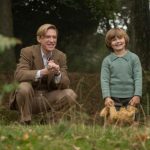
Bleecker Street Media 1 hour 57 minutes PG-13
So ironic that the man known for making films using motion capture to show the maximum action, directs his first feature film with a lead character who can only move his face. Andy Serkis has been touted award worthy for acting in his War for the Planet of the Apes motion capture performance. (Some have suggested there should be a separate category for motion capture acting, but he says no.)
Why did he want to direct Breathe about Robin Cavendish, who became bedridden with polio at the age of 28? Serkis played a punk rocker with polio in Sex, Drugs And Rock & Roll, his mother taught disabled children who also had polio, and his sister was wheel chair bound with Multiple Sclerosis. But what also attracted him was the script by William Nicholson (Unbroken, Les Misérables). He says it got to him emotionally.
This film is based on a powerful true love story. It shows that the passion to keep living and loving together made this couple find extraordinary ways to overcome the greatest obstacles.
Polio struck hard in the 1950’s. Most who contracted the illness were paralyzed from the neck down and had to be attached 24/7 to an iron lung in order to breathe. Andrew Garfield plays Robin Cavendish. Garfield worked with a vocal coach to get the wheezing of the breathing right for the role. But what is amazing is how the man who played Spiderman could also express so much emotion with only his face and a nod of the head.
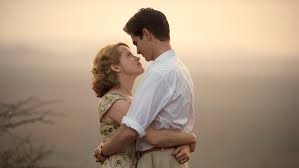
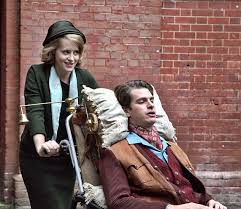
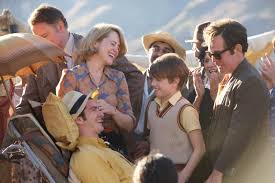
Cinematographer, Robert Richardson (The Hateful Eight, Eat, Pray, Love) captures every nuance from elation to exasperation to all out depression on Garfield’s face, and the panic, worry, tenderness and sorrow displayed by his wife, Diana, played by Claire Foy (The Crown). She is tireless as the care giver who is so determined to keep her husband’s spirits up and she will do anything to keep him breathing. But there is also a certain amount of humor. At one point they describe their situation by saying, “God’s a jerk.” Then correcting it saying “God’s a joker” and laughing.
Because of her love and dedication to keep him going and see his son Jonathan grow up, Diana helps fulfill Robin’s wish to get outside to set him free. This is a very physical role for Foy. She literally does the heavy lifting taking care of Robin in just about every scene. She is constantly schlepping everything they need inside and for their adventures together outside. Diana asked a friend who was a mechanic/inventor, Teddy Hall (Hugh Bonneville) to create a portable machine with a tube attached to his throat allowing him to breathe using a battery operated generator. It could be mounted on the bottom of a wheel chair so he could be mobile. Hall ending up building a business making more of these later on.
Garfield found humor being immobile and took the opportunity to tease Foy when she couldn’t get something right. If she was having trouble in a scene attaching the breathing apparatus, he’d tell her, you’re too late. I just died and they’d both crack up.
There is one scene in the film that is absolutely frightening. When Robin is taken to Germany to show his breath-giving wheel chair at a conference, he’s wheeled into what at first looks like a sterile-looking morgue. Then you realize that there are racks of living bodies in iron lungs stacked on top of each other in what the doctors there called their state-of-the-art facility. All you see are faces in mirrors reacting to his presence. It is horrifying. Because of the Cavendish’s coming up with a viable alternative, others were able to come out of their confinement.
There were challenges following the Cavendish’s extraordinary life and in setting the scenes to show in the film. While on the road in Spain, their generator blew and he had to get air pumped in manually until help came.
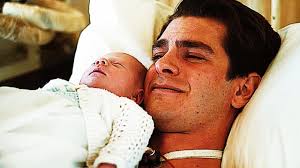
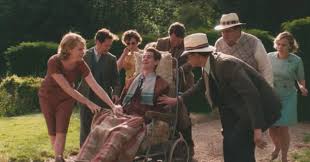
Serkis shows how they made lemonade out of lemons. They turned the situation into a party where locals brought in flamenco dancers, musicians and food until the generator could be fixed. The camera shows the party up close and then cuts wide and we see the unusual party setting on the side of a desolate road coming out of nowhere.
Serkis more than adequately shows that what the Cavendishes did changed the lives of so many suffering with debilitating disease. It prolonged their life together and gave hope to many others. This is a tearjerker, but it shows how little moments can be transformed into adventures.



